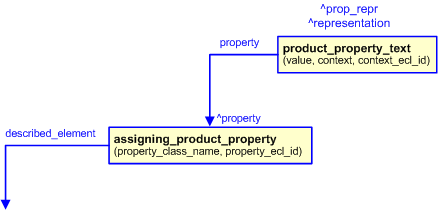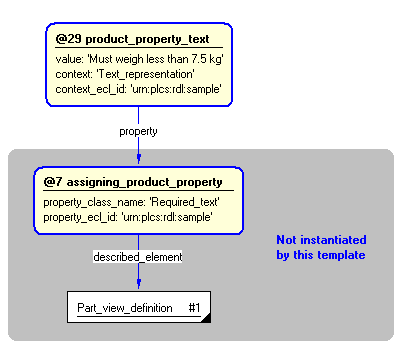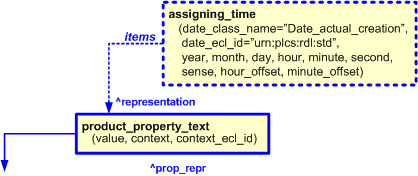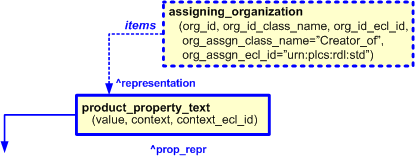
| Template:— product_property_text (prod_prp_txt) | Date: 2009/03/24 12:40:21 Revision: 1.20 |
This section specifies the template product_property_text.
NOTE An explanation of a template and the associated instantiation path is provided in the Template overview section.
This template describes how to represent a text string value for a product property.
EXAMPLE A quantity property may be represented with a text string; "As required".



target
is the parameter to which the
Representation
is bound.
target
is the parameter to which the
Property_representation
is bound.
| Entity in path | Value | Inherited from |
| Property_representation.role | '/IGNORE' | — |
| Property_representation.description | '/IGNORE' | — |



NOTE this characterization is optional.
A role or definition method can be associated with the property representation by using the template assigning_reference_data assigned to Property_representation (reference parameter ^prop_repr). The Express-G representation is shown in Figure 7. An instantiated example is shown in Figure 4.

NOTE this characterization is optional.
Dates can be associated with the assignment of property value representation by using the templates assigning_time.

A creation date is commonly assigned to the template product_property_text.
The date of creation of the property value representation is represented by using the template assigning_calendar_date to assign a date and time to Representation (reference parameter ^representation in template representing_text_property). The date assignment is classified as: "Date actual creation" (urn:plcs:rdl:std:Date actual creation) to indicate that it is the date (and time) when the property value representation was actually created. This is illustrated in Figure 8.
Other dates and times may be assigned instead.
NOTE this characterization is optional.
An Organization or a Person within an organization can be associated with the property value representation by using the templates assigning_organization, or assigning_person_in_organization.

A common role in which an organization is assigned to a property value representation is as a "Creator of" the representation. The creating organization is represented by using the template assigning_organization or assigning_person_in_organization assigned to Representation (reference parameter ^representation in template representing_text_property). The assignment of the organization (Organization_or_person_in_organization_assignment) is classified as: "Creator of" (urn:plcs:rdl:std:Creator of) to indicate that this organization created the property value representation. This is illustrated in Figure 9 and Figure 4.
Other roles of an organization with regard to a property value representation may be assigned instead.
© OASIS 2010 — All rights reserved